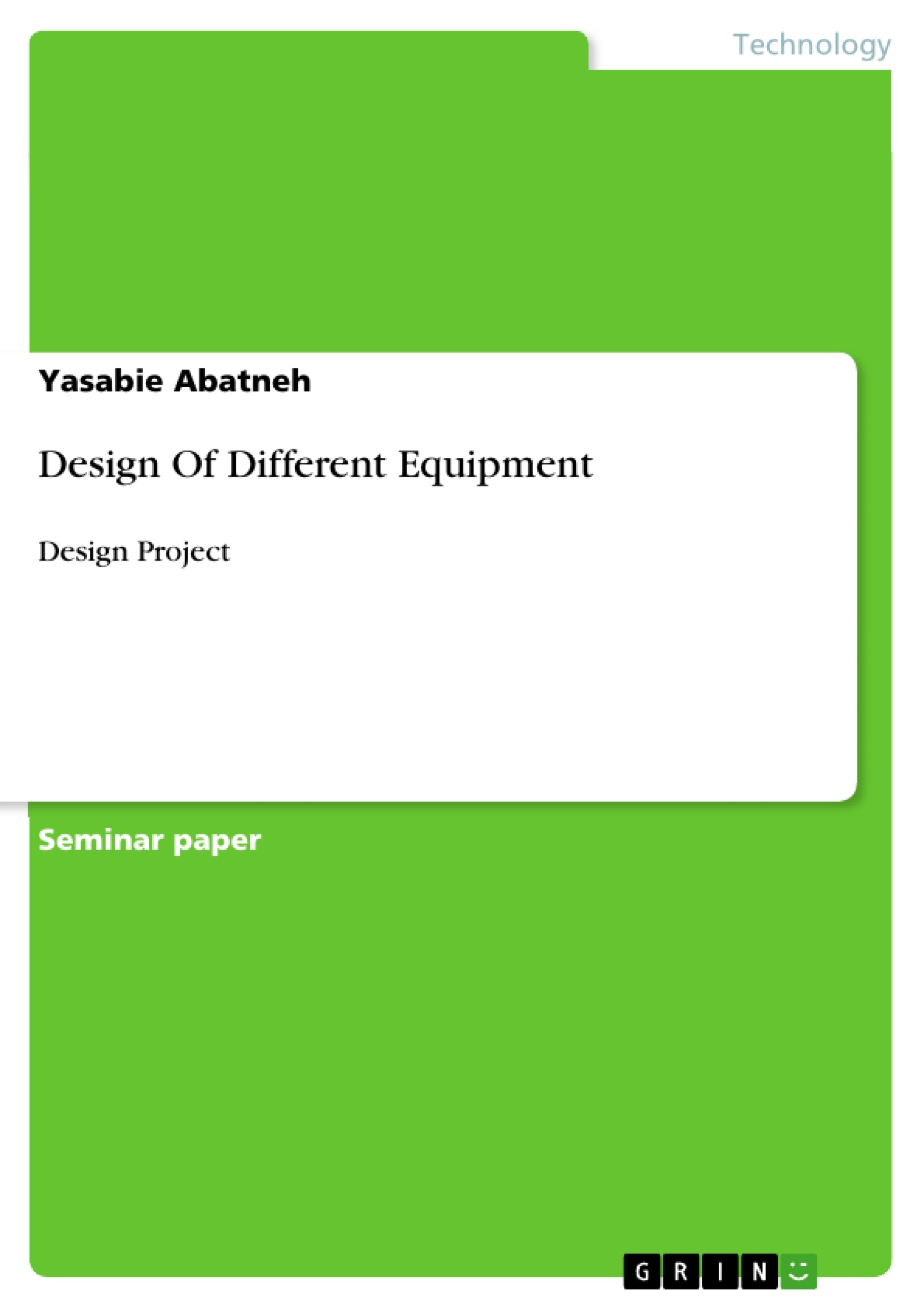As it was shown in the design set up, the design project contains some parts of typical plant unit operations that could be designed by the given data’s. In this paper the design analysis begins from the distillation column, by collecting data’s such as the vapor liquid equilibrium of the mixture and the physical properties of the mixture from chemical engineering handbooks [Perry].The McCabe Thiele method is used to determine the number of theoretical stages by plotting the operating and stripping line .The column diameter, perforations and tray spacing also designed.
Next, the heat exchanger design was done (U-tube) for heating purpose. By using a steam as a heating media and the type of material of construction, tube side and shell side pressure drops, generally thermal and mechanical designs is done. Similar procedure was followed for heat exchanger two (condenser).
Table of Contents
- Introduction
- Pre-heater design
- Shell side coefficient
- Pressure drop
- Pump selection
- Pipe selection
- Cavitation
- Pump specification
- Distillation column design
- Equilibrium data
- Column design
- Diameter design
- Perforation area
- Weir height
- Storage tank design
- Condenser design
- Shell side coefficient
- Tube side coefficient
- Shell side pressure drop
- Tube side pressure drop
- Summary of proposed design
- Pipe insulation
- Notations
- Acknowledgement
- Refference
Objectives and Key Themes
This paper presents a detailed design analysis of a typical plant unit operation, focusing on the distillation column, pre-heater, pump selection, condenser, and storage tank. The objective is to demonstrate a comprehensive design process utilizing available data and established engineering principles.
- Distillation column design and optimization
- Heat exchanger design and analysis
- Pump selection based on operational parameters and losses
- Storage tank sizing and insulation requirements
- Application of engineering principles and empirical data for practical design solutions
Chapter Summaries
The Introduction chapter sets the context for the design project, outlining the scope of the work and the key data sources used. It highlights the use of the McCabe Thiele method for distillation column design, the principles of heat exchanger design, and pump selection considerations based on Bernoulli's equation. The chapter also emphasizes the focus on practical design solutions while acknowledging the economic cost considerations are not addressed.
The Pre-heater design chapter details the calculation of heat load, steam flow rate, and overall heat transfer coefficient. It describes the selection of pipe materials and dimensions, and the determination of tube and shell side convective heat transfer coefficients.
The Pump selection chapter introduces the use of Bernoulli's equation to calculate the required pump power. It addresses head losses due to pipe roughness, fittings, and heat exchanger pressure drops, and concludes with the verification of the net positive suction head (NPSHA) against the net positive suction head required (NPSHR).
Keywords
Distillation column, heat exchanger, pump selection, storage tank, McCabe Thiele method, Bernoulli's equation, heat transfer coefficient, pressure drop, NPSHA, NPSHR, design analysis, engineering principles, unit operations, data analysis, physical properties, thermal design, mechanical design, practical solutions, cost considerations.
- Quote paper
- Yasabie Abatneh (Author), 2013, Design Of Different Equipment, Munich, GRIN Verlag, https://www.grin.com/document/212472



